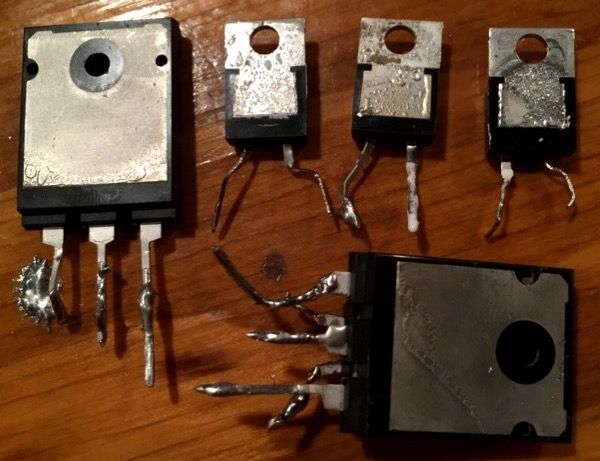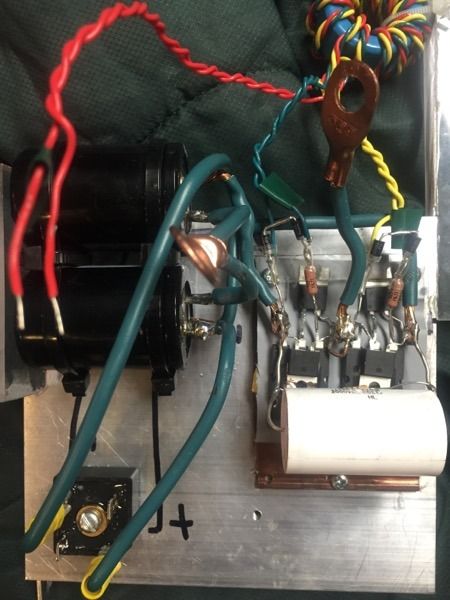- Joined
- Dec 14, 2008
- Messages
- 33
- Points
- 18
To embed YT video's use ..
And yes in the last video you can easily see the energy being ramped, instead of dumped...a clear rise and fall. Clever design.
Thanks. In fact a similar effect can be achieved the same way VTTCs do so, by using the rising sine wave of the mains to drive a small SSTC.

This was designed primarily to experiment with this effect before moving on to the more complex QCW designs. It was also an exercise in developing a single board SSTC just for fun, of which I recently updated to use a full bridge of IGBTs:

This was designed to fit into most ATX power supply boxes (not an ideal choice I know! But it makes for a cute case!), and also features swappable interrupter cards just like a graphics card on a motherboard. So far it's been a nice little design which I use to test some new ideas since it was designed to be a relatively simple general purpose SSTC platform.
Last edited:










